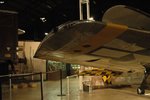I am unsure if this is the proper forum for this or not, so please move it to the correct forum (wasn't sure if it would be proper for the markings forum).
I am aware of the identification lights used on several allied aircraft. How did they operate? Did they stay on when over allied ground? did they blink or were they persistent? When would they be turned on?
I have looked for a while, but always found it to be very generically described.
Thanks for any help.
I am aware of the identification lights used on several allied aircraft. How did they operate? Did they stay on when over allied ground? did they blink or were they persistent? When would they be turned on?
I have looked for a while, but always found it to be very generically described.
Thanks for any help.

